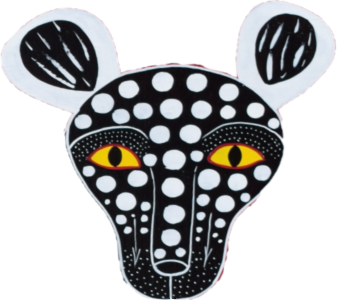DESCRIPTION:
This stunning painting captures the beauty and diversity of the natural world in Tanzania, Africa. The artist has masterfully depicted a serene landscape that is teeming with life, from the lush grass to the vibrant flora and fauna. The focal point of the painting is a group of cormorants that are gathered on the ground, their sleek black feathers contrasting sharply with the verdant grass.
The cormorant is a common sight in Tanzania, where it can be found along the country's many rivers and lakes. These aquatic birds are known for their excellent diving abilities, which they use to catch fish and other small prey. In this painting, the artist has captured the cormorants in a moment of repose, their long necks craned as they survey their surroundings. The viewer can almost imagine the sound of their deep-throated croaks echoing through the air.
Cormorants are a group of aquatic birds that are found all over the world, from the coasts of North America to the rivers of Africa. They are well-known for their distinctive appearance, with long necks and streamlined bodies that are perfect for diving and swimming. There are around 40 different species of cormorants, each with its own unique characteristics and adaptations.
One of the most interesting things about cormorants is their ability to dive deep underwater in search of food. They have specially adapted eyes that allow them to see clearly in murky water, and their streamlined bodies and webbed feet make them excellent swimmers. Cormorants can stay underwater for up to a minute at a time, and they are able to catch fish and other prey with remarkable speed and accuracy.
Cormorants are also known for their distinctive hunting behavior. Unlike many other birds that rely on their beaks to catch prey, cormorants use their powerful necks and jaws to swallow fish whole. This can be a difficult task, especially for larger fish, and cormorants have been known to use various techniques to make it easier. Some species of cormorants will thrash their prey around in the water to break its spine, while others will toss their catch into the air and catch it head-first to make it easier to swallow.
Despite their impressive diving and hunting abilities, cormorants have a complicated relationship with humans. In many parts of the world, they are considered a nuisance, as they are known to eat fish that are valuable to fishermen.
The cormorant's black body is one of its most striking features, and it plays an important role in the bird's survival. The cormorant's feathers are denser and less buoyant than those of other aquatic birds, which allows the bird to dive deeper and stay underwater longer in pursuit of prey. The dark color of the feathers also helps to absorb sunlight and heat, which is important for regulating the bird's body temperature in colder waters.
In addition to their functional benefits, the cormorant's black feathers are also aesthetically pleasing. The deep, glossy black of the feathers contrasts sharply with the bright green of the grass or the blue of the water, creating a striking visual effect. This contrast is particularly pronounced in the painting, where the cormorants' black bodies stand out against the vibrant green of the grass.
Interestingly, the cormorant's black feathers were once prized by humans for their beauty and usefulness. In some cultures, cormorants were trained to catch fish for their human handlers, and the birds' feathers were used in clothing and other decorative items. However, over time, human activity has threatened cormorant populations in many parts of the world, and the birds are now protected by law in many countries.
Up in the tree, we see a riot of color and movement as various species of birds flit among the branches. There are bright green parrots with iridescent feathers, dainty finches with delicate beaks, and even a pair of hawks perched on a high branch, their sharp eyes scanning the landscape below. The tree itself is a marvel of nature, its branches twisting and turning in intricate patterns that seem almost alive.

SPECIFICATIONS:
|
Medium: |
Painting : oil, acrylic, ink |
|
Themes: |
Handmade African Art |
|
Support: |
Canvas |
|
Type: |
Unique work |
|
Framing: |
Not framed |
Payment:
|
Payment is 100% secured and encrypted |
|
Shipping: |
Will be shipped inside a secure tube |
Origin:
|
Handcrafted in Tanzania |
- Need it in a different size or style? Contact us to give us your specifications.
- Not happy with the listed price? Make your offer by clicking the button above.




